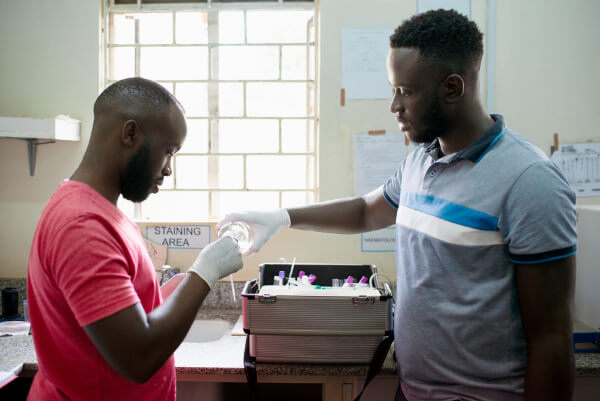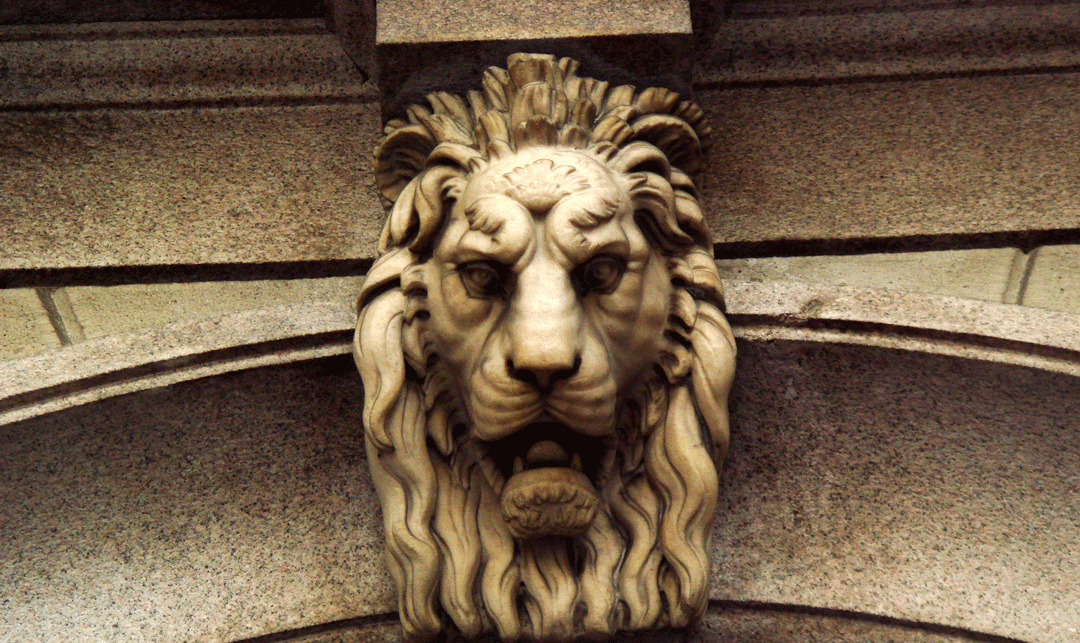Los Angeles has a penchant for attracting creative talent. Artists, visionaries, and entrepreneurs all flock to the city. Through its ties to broadcast, print, and digital media, LA has developed a unique ability to export culture and ideas to a global audience. But unlike New York or London, it is a young city, having surpassed Chicago as the second most populous city in the U.S. within just the last 25 years. It is a city of potential, a city that thrives on new challenges, and that attitude is what inspired Michael Govan to accept his current position as the Chief Executive Officer and Wallis Annenberg Director of the Los Angeles County Museum of Art (LACMA) back in 2006. When he arrived from New York, he saw a young museum that was both willing and able to become a focal point of art and culture for LA and for the world.
“With LACMA, there was the sense of a place that was still new where one might have an impact in defining the future of a museum at a more formative stage in its development,” Govan said of his decision to move acro ss country. Prior to Govan’s arrival, the museum board had purchased part of the May Company grounds, which would eventually become the location of the Resnick Pavilion and the Broad Contemporary Art Museum. The fact that the board had already made a bold move to expand the campus signaled to Govan that they were committed to growth and open to new ideas, not just construction, but also new gallery designs and public sculpture.
ss country. Prior to Govan’s arrival, the museum board had purchased part of the May Company grounds, which would eventually become the location of the Resnick Pavilion and the Broad Contemporary Art Museum. The fact that the board had already made a bold move to expand the campus signaled to Govan that they were committed to growth and open to new ideas, not just construction, but also new gallery designs and public sculpture.
Opened in 1965, LACMA is still defining itself. Govan, with an established track record in New York for building and expanding museums’ physical campus size as well as their collections, saw a chance to reinvent the fundamental expression of the art museum.
“We have the opportunity to completely redefine what an encyclopedic museum can be,” he explains. “LACMA has a collection of 120,000 objects spanning all times and all cultures, but, unlike museums founded a century ago, we’re not hard-wired to present a more Euro-centric presentation of art. That bias simply does not resonate with Los Angeles—a city that was once part of Mexico and which faces out to Asia and the Pacific.” Instead, Govan works to ensure that Latin American objects as well as Korean, Chinese, and Japanese works receive prime gallery space alongside European, African, and Middle Eastern art. Photography, film, fashion, and design are granted stature equal to that of the more tenured media such as painting and sculpture.
Govan himself is an artist, having earned a Bachelor of Arts in art history from Williams College in Massachusetts where he took on his first museum position as acting curator at the Williams College Museum of Art (WCMA). While still a student there, he organized exhibitions on Picasso and Rembrandt and began a relationship with his mentor, Director of WCMA Thomas Krens. This led to them working together to launch the Massachusetts Museum of Contemporary Art (MASS MoCA), transforming an old electric company building into the largest center for contemporary art in the United States. Through working with Krens, he began to realize how creative and extraordinary creating a new museum could be.
“You can have an impact on the economy as well as artistic practice . . . and you build relationships with a variety of people, artists, politicians, and business people,” he says. “I meet with so many business leaders that are at the top of their game. It is just incredible to witness how their minds work in maximizing value. What I find interesting is what happens when they engage with a civic project. They have to think about community rather than customers. They have to think about legacy as much as immediate results. [Krens] taught me to see that the future is malleable and that art museums play a significant role in our larger society.”
When asked what exactly that role is, Govan doesn’t hesitate. “Art is a vehicle by which humanity expresses itself. Art is at the highest level of philosophy, aesthetics, social change, and community. Art is how we communicate what we’ve learned in our own time, to put it in a capsule and convey it thousands of years forward . . . and that’s the real joy.”
Having spent time as a student studying Renaissance art in Italy, Govan has a firm grasp on how art’s longevity can play a key role in defining a city throughout the ages. After doing graduate work at the University of San Diego, he returned to New York to rejoin Krens, who by then was director at the Solomon R. Guggenheim Museum. There Govan worked as deputy director and was introduced to and worked with many of the most important artists who emerged in the 1960s and ’70s. He helped the museum acquire over 330 works of art from the Panza Collection. He worked at branches in New York, Venice, and Bilbao, organized major exhibitions, oversaw the reinstallment of the collection’s galleries, and produced scholarly publications.
In 1994, he took on new responsibilities when he accepted a position as President and Director of Dia Art Foundation. There, he doubled Dia’s art collection and spearheaded the creation of “Dia:Beacon” along with artist Robert Irwin (best known in Los Angeles for designing the iconic Central Garden at the Getty Center) to transform a 350,000 square-foot former factory in the Hudson Valley into a museum to house Dia’s art collection.
 “Irwin has been perhaps my greatest mentor in thinking about art within a context of experience,” he said of their relationship. They have continued to work together, with Irwin designing LACMA’s Palm Garden, which has evolved in reaction to the various new constructions and installations at the museum campus.
“Irwin has been perhaps my greatest mentor in thinking about art within a context of experience,” he said of their relationship. They have continued to work together, with Irwin designing LACMA’s Palm Garden, which has evolved in reaction to the various new constructions and installations at the museum campus.
“I like to joke that I’ve almost never worked at a museum that wasn’t under construction or planning new construction,” Govan observes, regarding the impressive changes LACMA has undergone in the seven years since his arrival. “My lifelong interest in the interaction between art and architecture has driven my efforts to commission and site large-scale and permanent artworks.”
Examples of such works abound on LACMA’s campus: Chris Burden’s Urban Light, a small forest of 202 vintage Southern California lampposts located along the Wilshire Boulevard entrance (and yes, they do light up at night); Barbara Kruger’s black, white, and red text-based mural, which coats the interior of three stories of the Broad Contemporary Art Museum’s elevator shaft; or most recently, Michael Heizer’s Levitated Mass, a land-art piece featuring a 340-ton granite boulder, which made headlines as it was transported from Riverside through four counties to reach its new home perched above a p edestrian walkway on the museum’s north side. These large-scale works of public art have quickly become icons for the museum, and by extension, the city. The physical space is available, so Govan encourages contemporary artists to put it to use.
edestrian walkway on the museum’s north side. These large-scale works of public art have quickly become icons for the museum, and by extension, the city. The physical space is available, so Govan encourages contemporary artists to put it to use.
But some of Govan’s most impressive achievements are much less immediately apparent. Since his 2006 arrival, the museum has acquired over 10,000 works for their permanent collection, including one of the most significant private collections of Pacific Island art assembled in the 20th century. They have accumulated 500 examples of European dress and accessories from 1700–1915, and received the Marjorie and Leonard Vernon collection, including some 3,500 photography prints. LACMA’s modern art collection was also expanded under Govan’s supervision, including the Lazarof Collection, which contains 130 notable works.
With new art collections and commissions rotating into LACMA, there is a need for new ways of displaying and organizing their presentation. “I believe in a ‘horizontal’ structure that fosters collaboration across all areas of the museum,” Govan said, in regards to managing such a load. “As the director of an art museum, I want to make art and artists the first priority in all areas.” This means having artists involved at every level at LACMA, for everything from exhibition designs, to their website, to their business cards. “Artists help us to understand the culture we live in; as a cultural resource for a city as dynamic and diverse as L.A., we need artists to help us carry out our mission.”
Govan put his artists to work, designing gallery space while encouraging contemporary artists to interact with the museum’s historic collections. John Baldessari organized the 2006 exhibit Magritte and Contemporary Art, Jorge Pardo designed gallery space for the permanent collection of Ancient American art, and Franz West created an installation design for the exhibition of LACMA’s recently acquired Pacific Island art.
What excites Govan most, though, is the expansion of the 22-acre campus’ eight buildings and the addition of new museums on the site.
“It’s not just LACMA being transformed,” he informs us. “It’s the property containing LACMA and the Page Museum, as well as two properties across the street on Wilshire that are as yet undeveloped.” The Academy Museum of Motion Pictures is planning a museum (in the May Co. building anchoring the corner), and there’s already the Petersen Automotive Museum across the street. Govan hopes to create a real center for the city, not just LACMA. The city has invested in developing Metro lines to connect the downtown area to the Westside, which will give a new audience access to the district.
Since 2006, the Transformation campaign has reshaped the entire west side of the museum’s campus. The Renzo Piano-designed Broad Contemporary Art Museum and Resnick Pavilion doubled the size of LACMA’s gallery space, and the museum visitors have taken notice, with annual attendance topping 1.2 million for the last two years, up from 600,000 in 2007.
“Now, we’re focused on the east campus and the Zumthor project, which presents some incredible opportunities,” says Govan. Swiss architect Peter Zumthor’s prospective designs would replace the dated William Pereira-designed campus and its 1986 Hardy Holzman Pfeiffer Associates-designed addition with an energy efficient, organically shaped structure inspired by the adjacent La Brea Tar Pits. Plans for such an all-encompassing makeover are still in the early stages and building has not yet begun. Govan doesn’t see what he does as building, though, but as engaging in dialogue. “I’m more of a coordinator, trying to figure out how to site [a new structure], situate it, and figure out how it works in relation to the museum.”
Whether building or engaging in dialogue, the Washington, D.C. native has his eye on the future. “We’re making a museum that will inspire generations to come,” Govan gushes, pointing out that most CEOs think in terms of quarters, but art museum directors must think in terms of quarter centuries. “It takes a quarter century to make big changes in art museums, and those efforts can have long-lasting effects, so the need to be conscious of a long future is just as important as the focusing on the history they preserve.”
In most businesses, the implicit goal is to create shareholder value. In LACMA’s case, the shareholders are the public and the value is experiential and educational, not monetary. Instead, art museums seek to encourage, preserve, and present art in the interest of enhancing the quality of people’s lives. How a museum goes about that is up for interpretation, though, and can be accomplished in a wide variety of ways. For Govan, the goals of an art museum are ultimately simple: make art accessible and foster community.
“I’ve personally seen how transformative a museum can be for its community. And today, with LACMA, we think about the impact of our actions 100 years from now. One simple example of that is the new museum will have a solar array that generates more power than it consumes. In a city as large and consumptive as Los Angeles, we’re leading by example to a sustainable and inspirational future.”

LACMA’s plan for the future. From the installation, “The Presence of the Past: Peter Zumthor Reconsiders LACMA”
Los Angeles is both young and diverse enough to allow creative experimentation, and Govan aspires to use this to set a new standard of how an art museum can serve its audiences. A museum can be a place for art but also function as an educational resource. It can be a place for meditation and quiet contemplation or a space to share civic engagement with others—to see a movie, have a drink, read a book, or play around a public sculpture.
This holistic approach appeals to Govan’s belief in the important role artists play in interpreting culture. “Artists of today are connected to what is happening now and what we are now, and I think often create works that are more directly accessible than the art of the past.” Because LACMA is an encyclopedic museum and contains art from all eras and regions, one can look at contemporary works alongside classic or ancient artworks that have stood the test of time—unlike a contemporary art museum which presents new art mostly outside the context of history. In Govan’s words, “No one knows precisely what will be valued in the future, but it is instructive to look at art from all times rather than focus too narrowly on one.”
Perhaps it is no surprise, then, that Govan occasionally takes to the skies in his single engine airplane to get a better sense of the big picture, both literally and figuratively. Life, as well as art, requires space and time for reflection. When he wants to relax and enjoy the view, he flies out to Catalina Island, along the coast, or over the desert, to museums in other places—sometimes alone and sometimes with family. He learned to fly in 1995 in New York and has made flying across the country an annual pilgrimage. Since small planes require multiple fuel stops for such a long journey, Govan has decided to use this to his advantage, stopping in places such as Kansas City, Minneapolis, and Columbus, where he has familiarized himself with many museums in the Midwest—a fact of which few New York museum heads can boast.
LACMA, too, has increased its presence outside of the Los Angeles area. Between 2013 and 2014 it will have sent 11 LACMA-organized exhibitions to 18 venues worldwide, including in Mexico, Korea, Australia, and Europe. Over 80,000 objects from its collection have been made available online, a quarter of which can be downloaded for free in high resolution. Digital technologies have had a huge impact on how museums communicate with their audiences, how they educate, and how they interact with other museums and collections. LACMA is working hard to stay at the forefront of that transition, sharing its collection and scholarship with more people than ever before, numbering in the millions—something Govan takes great pride in.
“I love connecting many different kinds of people to a common goal. Often there can be an immense difference of motivation and experience between a businessperson and an artist—but the commonalities of contributing something worthy and new to our world can bind those different points of view. The key is to see that one goal can serve many purposes and constituencies.”
Govan’s goal has been to take LACMA, now the largest art museum in the western United States, and set it at the vanguard of a new global, cultural exchange. It is possible that in 50 years, people will discuss LACMA with the reverence usually reserved for the Louvre or the Met. Perhaps by then museums will have moved primarily online. There are many exciting changes yet to come at LACMA but, if reaction from the public is any indication, Govan’s work has already become a permanent part of LA’s cultural identity––no small feat in a city that loves to reinvent itself.













































